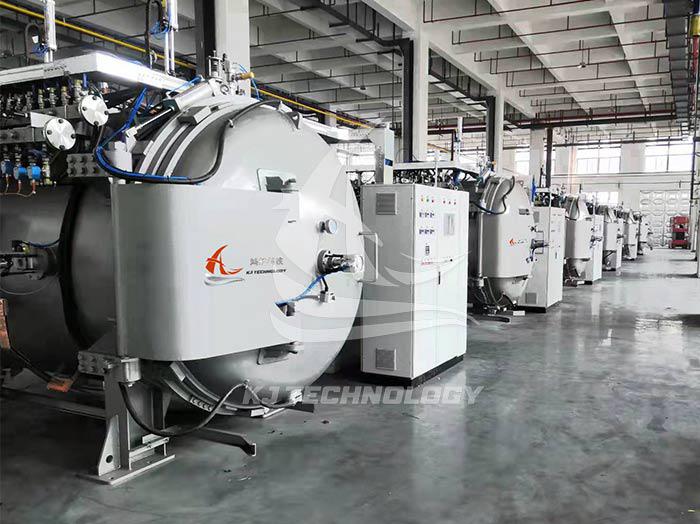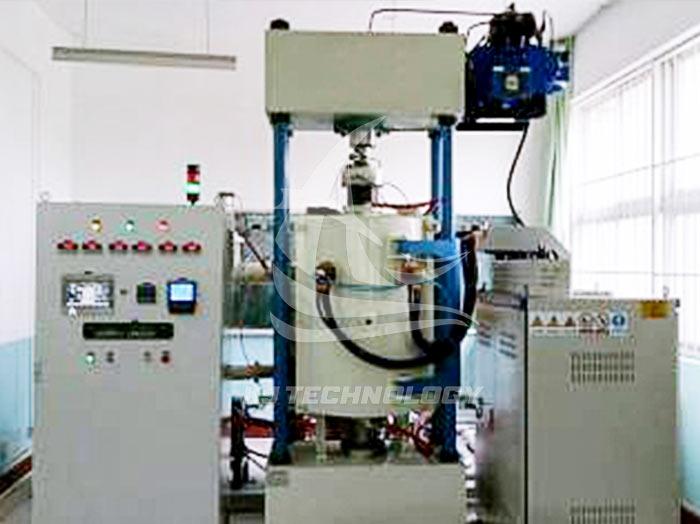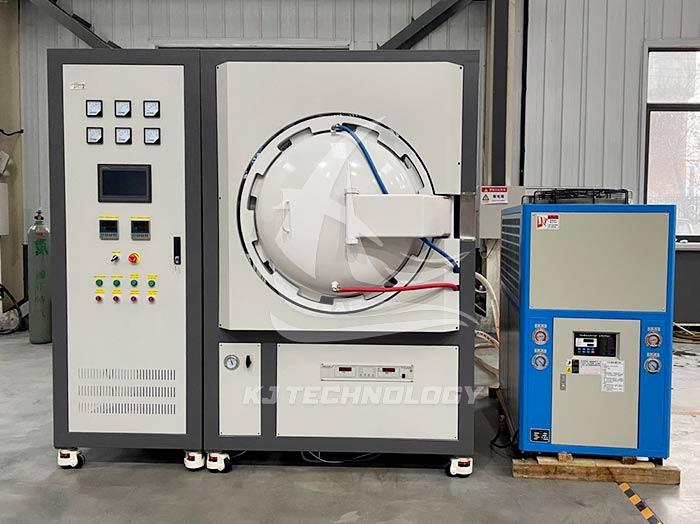Common faults and solutions of laboratory vacuum furnaces
 06-26-2025 Author: KJ technology
06-26-2025 Author: KJ technology
The common faults and solutions of laboratory vacuum furnaces are as follows:
1. Abnormal temperature
Fault phenomenon: High temperature alarm or display temperature unable to reach the set value.
resolvent:
Check the parameters of the thermostat: First, confirm whether the parameters of the thermostat in the working area are normal, and refer to other thermostats in normal use to calibrate all parameters.
Check the solid-state relay: After a power outage, use a multimeter to measure the resistance between the two output points of the solid-state relay. Normally, the resistance should be several megohms or more. If it is broken down, there is almost no resistance and it must be replaced with a new one of the same model.
Check the thermocouple: With the power on, gently shake the thermocouple probe in the corresponding working area by hand to see if the corresponding temperature controller displays a large jumping amplitude. If this phenomenon occurs, it indicates that the thermocouple probe has poor contact and needs to be replaced with a new one. At the same time, check if the thermocouples are damaged by swapping them with thermocouples on a normal thermostat and observing the temperature display. If the thermocouple is indeed damaged, it must be replaced.
Check the heating tube: If there are no problems with the thermostat and thermocouple, it is necessary to test whether the heating tube is working properly when powered on. Method: After turning on the power, start the heating. According to the circuit diagram, directly use a test pen to test the wires connected to the heating tube in the corresponding working area (the white high-temperature wire on the solid-state output terminal is the one) to see if there is electricity. If there is electricity arriving, it is necessary to use a clamp meter to measure whether the current is different from other working areas. Under normal circumstances, the difference is not significant. If there is no electricity arriving, the circuit must be checked one by one according to the circuit diagram to see where the electricity is cut off and whether any components are burned out.
2. Abnormal vacuum degree
Fault phenomenon: Vacuum cannot be drawn up or is too low.
resolvent:
Check the vacuum gas source and compressed air pressure: First, confirm whether the vacuum gas source is normal (above -95KPa) and whether the compressed air pressure is normal (normal operating range is 0.4~0.6 MPa).
Check the vacuum gauge: Check if the vacuum gauge is in good condition, compare it with the vacuum gauge in normal use, and see if the parameters are normal.
Check the sealing of the furnace door: Check if the door is tightly closed, if the sealing film at the door is damaged or deformed, and if there are any foreign objects on the door panel.
Check the pipelines and valves: If there are no issues with the doors, it is necessary to inspect the pipelines, pneumatic valves, thermocouple inlet ports, and other locations in the corresponding work area. Usually, there are more situations at the inlet of thermocouples, because if thermocouples are replaced, it often damages the sealing performance of the vacuum and requires re sealing with AB glue. At the same time, check whether the valves are leaking. Valves such as butterfly valves, baffle valves, plug valves, ball valves, solenoid valves, and diaphragm valves are commonly used in vacuum furnaces. The sealing rings of the valves are easily damaged in unclean environments, and should be filtered before entering the valves and pumps in polluted environments.
Check the vacuum pump: Check the operation of the vacuum pump and clean or replace it if necessary. Pollution, insufficient or too thin pump oil may lead to insufficient vacuum degree, requiring cleaning of the vacuum pump and replacement with new vacuum pump oil.
3. Mechanical structural failure
Fault symptoms: The door is not tightly closed, there is abnormal noise from the fan, and the pneumatic valve cannot operate.
resolvent:
Door not tightly closed: Check if the hinges of the door are loose, if the buckle is deformed, if the sealing strip at the door is damaged, and if the door panel is deformed.
The fan has abnormal noise: carefully check whether there are foreign objects entering the fan's impeller or whether the screws fixing the motor are loose.
Pneumatic valve cannot operate: First, check whether the corresponding solenoid valve can work normally and whether the compressed air pressure meets the working requirements. If the air pressure is normal and the solenoid valve is also in good condition, it must be that the pneumatic valve itself is broken and must be replaced with a new one.
4. Other faults
Fault symptoms: such as heating element damage, control system failure, thermocouple failure, insufficient cooling water supply, cooling system blockage, etc.
resolvent:
Heating element damage: Check the connection and resistance of the heating element, repair or replace the damaged heating element.
Control system malfunction: Check and calibrate the control system to ensure its proper functioning.
Thermocouple malfunction: Replace or reconnect the faulty thermocouple.
Insufficient cooling water supply: Check if the cooling water pipeline is unobstructed to ensure sufficient cooling water supply.
Cooling system blockage: Clean the blockage in the cooling system.








